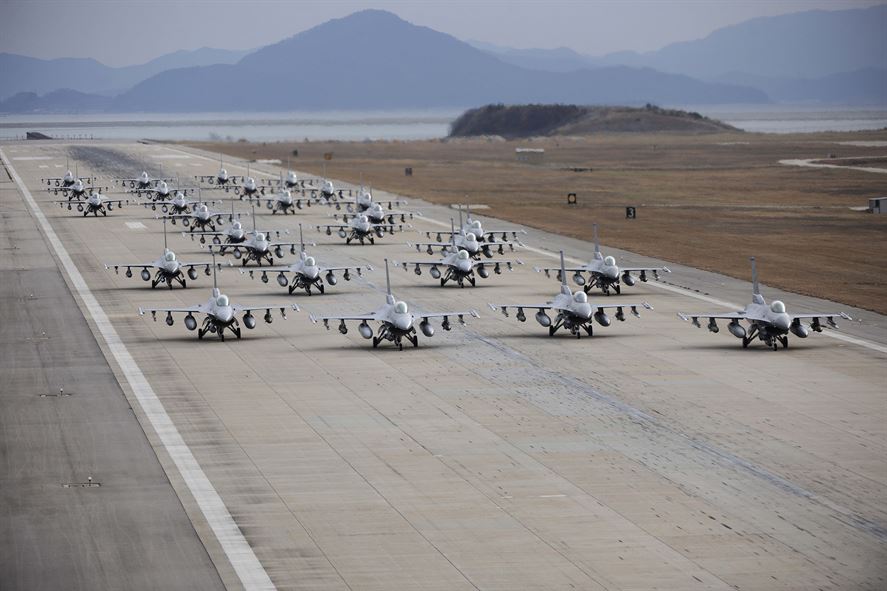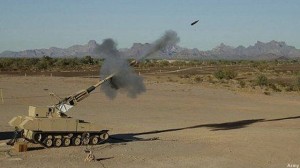Bad Idea: A Swiss Army Knife Approach to Defense Acquisition
Posted on

We’re partnering with the Center for Strategic and International Studies to bring you their fab Bad Ideas series through the Christmas holiday season. This one deals with something Breaking D readers know a great deal about: the wonders of how requirements get built and the ensuing fun that can follow. Gabriel Coll of CSIS reminds everyone of a simple concept derived from analysis of great complexity: building weapons that do lots of things is a very attractive idea. Read on to see how Coll crafts his argument about this. The Editor.
Defense programs are expensive. Each country’s military has a long list of capabilities that they want to invest in, and most militaries operate within a fiscally constrained environment.
While the capabilities that militaries seek may differ, there are broad areas where common interests emerge. For example, several countries may want to invest in a new fighter jet; a country’s air force and army may share the need for a new attack helicopter; and naval commanders may each plan to procure a new surface combatant to fulfill their assigned missions. This environment of fiscal constraints and common interests often leads to a bad idea: combine multiple defense acquisition programs into one pursuing a Swiss army knife approach to weapons development.
At first glance, this approach has several benefits: resource allocation can be more targeted, there can be fewer complex contracting arrangements, and government officials can reduce the number of programs that they oversee. Perhaps most importantly, this approach promises to increase economies of scale, which serves to drive down costs as the quantity of production increases. Fixed costs can be distributed among more units and variable costs can be reduced as a program has more time to move along the learning curve. Notable examples of programs combining multiple capabilities that had traditionally been separated into distinct programs include:
- Joint Strike Fighter program: a fifth-generation fighter to meet the future needs for the U.S. Air Force, Navy, and Marine Corps, as well as for other country’s air forces. This program involved the development of three distinct variants (a conventional fighter, short takeoff and vertical landing fighter, and a carrier-specific fighter) each built from the same fundamental design.
- Future Combat Systems: a U.S. Army program involving many manned and unmanned systems. While the systems included distinct vehicles, they were combined into a single program in order to be linked together by a set of new technologies.
- Littoral Combat Ship: a U.S. Navy program to produce a small surface combatant with modules capable of fulfilling different mission areas. As a result, the same vessel design could serve a range of functions including antisubmarine warfare, mine countermeasures, amphibious and surface warfare.
While the benefits of this approach are compelling, combining multiple defense acquisition programs with unproven technologies into one program is generally a bad idea for several reasons.
First, major new defense programs tend to rely on the development of unproven technologies. Even a few straightforward requirements, such as a higher level of engine thrust or improved stealthiness, can end up being tremendously difficult to accomplish. And, because these new technologies are untested at a program’s inception, it is also difficult to determine how long the development process will take. When one combines multiple capabilities that have traditionally been separate, the acquisition process often becomes substantially more complex.
The process of integrating distinct capabilities into one program introduces important tradeoffs in time and cost. On one hand, the contractor can deliver a product that meets most of the performance requirements, within the general time frame and cost constraints. The final product can deliver on most of the required capabilities, but can perform none of them exceptionally well. On the other hand, the contractor can deliver a product that achieves all performance requirements exceptionally, but any development delays will lead to time or cost overruns. And, by jamming multiple R&D projects into one, the likelihood of this happening is much higher. Consequently, the result is often a product that: (1) doesn’t sufficiently meet the needs of each customer; or (2) takes too long and costs too much for the customer. If either of these are the result, it risks jeopardizing the rationale behind a Swiss army knife approach in the first place.
The key rationale often used to justify a Swiss-Army-knife approach is to increase economies of scale, thereby decreasing per unit costs as the program moves down the learning curve. However, when development problems result in a product that falls short of the customer’s expectations, there’s an increased likelihood that the customer will decrease (or even cancel) planned buys and the learning curve will be truncated. The nature of these large acquisition programs is to bring together a wide range of customers and stakeholders. This creates a dynamic where each group is less influential in determining the final product. But they all influence the degree to which economies of scale are ultimately achieved. If any partner decides to cancel or reduce its planned buys, then the unit cost will increase for all of the other partners on the program. Other customers may then become more inclined to decrease their planned buys, leading to a programmatic death spiral. Consequently, the promises of economies of scale may fall short.
Second, this idea poses a threat to competition. After the Cold War, defense budgets fell, leading to industry consolidation. Today, there are a limited number of companies that can provide defense products and services to the Pentagon. This is especially true for capabilities that require advanced weapon technology, where only a handful of prime contractors compete. Below the prime contractor level, this is also true for some components, where only a few subcontractors can produce individual weapon parts. A Swiss-army knife approach further incentives consolidation and can reduce competition within the industry base.

The cancelled FCS artillery vehicle
Combining multiple programs into one not only decreases the number of acquisition programs, but also results in situations where a single contractor becomes responsible for entire sectors of the defense industry. Moreover, given the scale and duration of major acquisitions, potential competitors are left on the sidelines for years and risk losing the ability to compete in the long-term. For example, when Lockheed Martin won the Joint Strike Fighter contract, it not only became the company to build the next-generation fighter jet; it also won an effective monopoly in the U.S. fighter jet market for the first half of the 21st century. This approach creates a winner take all environment.
During the 2008 financial crisis, government officials determined that the failure of certain large banks would pose a systemic threat to the entire financial system. A similar situation exists within the U.S. defense acquisition system. For the foreseeable future in the U.S., only one company will build fighters, one company will build bombers, one company will build tankers, one company will build destroyers, one company will build aircraft carriers, and the list goes on.
Given the consolidated nature of the U.S. defense industrial base, the failure of certain large companies could pose a systemic threat to the entire U.S. acquisition system. Moreover, this problem also exists at a smaller level. The failure of some acquisition programs could also pose a systemic threat. Not only are there single companies responsible for key acquisition programs, there are sometimes one company capable of fulfilling those programs. In part, this situation is attributable to the nature of defense contracting and fiscal constraints. But, with a winner take all result, a Swiss-army approach undoubtedly worsens this situation.

The cancelled NPOESS weather satellite
Combining multiple defense acquisition programs with unproven technologies into one program is dangerous. While the immediate appeal of a Swiss-army knife approach is tempting, the risks of this approach have the potential to far outweigh the benefits. Promises of economies of scale are often overoptimistic and the threat of diminished competition will always be an issue.
Traditionally distinct acquisition programs should be combined into one only when the technologies involved are mature and well-tested, and when the development risk is minimal. If this is the case, policymakers will still need to decide whether the benefits of a combined program outweigh the consequences of reduced competition, or whether there should be multiple contractors. When the technologies are not mature and well-tested, the U.S. should build systems that can be adapted to incorporate these technologies in the long term. But, these technologies should not be allowed to become a bottleneck that slows acquisition and threatens the entire program.
This report is produced by the Center for Strategic and International Studies (CSIS), a private, tax-exempt institution focusing on international public policy issues. Its research is nonpartisan and nonproprietary. CSIS does not take specific policy positions. Accordingly, all views, positions, and conclusions expressed in this publication should be understood to be solely those of the author(s).
© 2017 by the Center for Strategic and International Studies. All rights reserved.
Subscribe to our newsletter
Promotions, new products and sales. Directly to your inbox.
